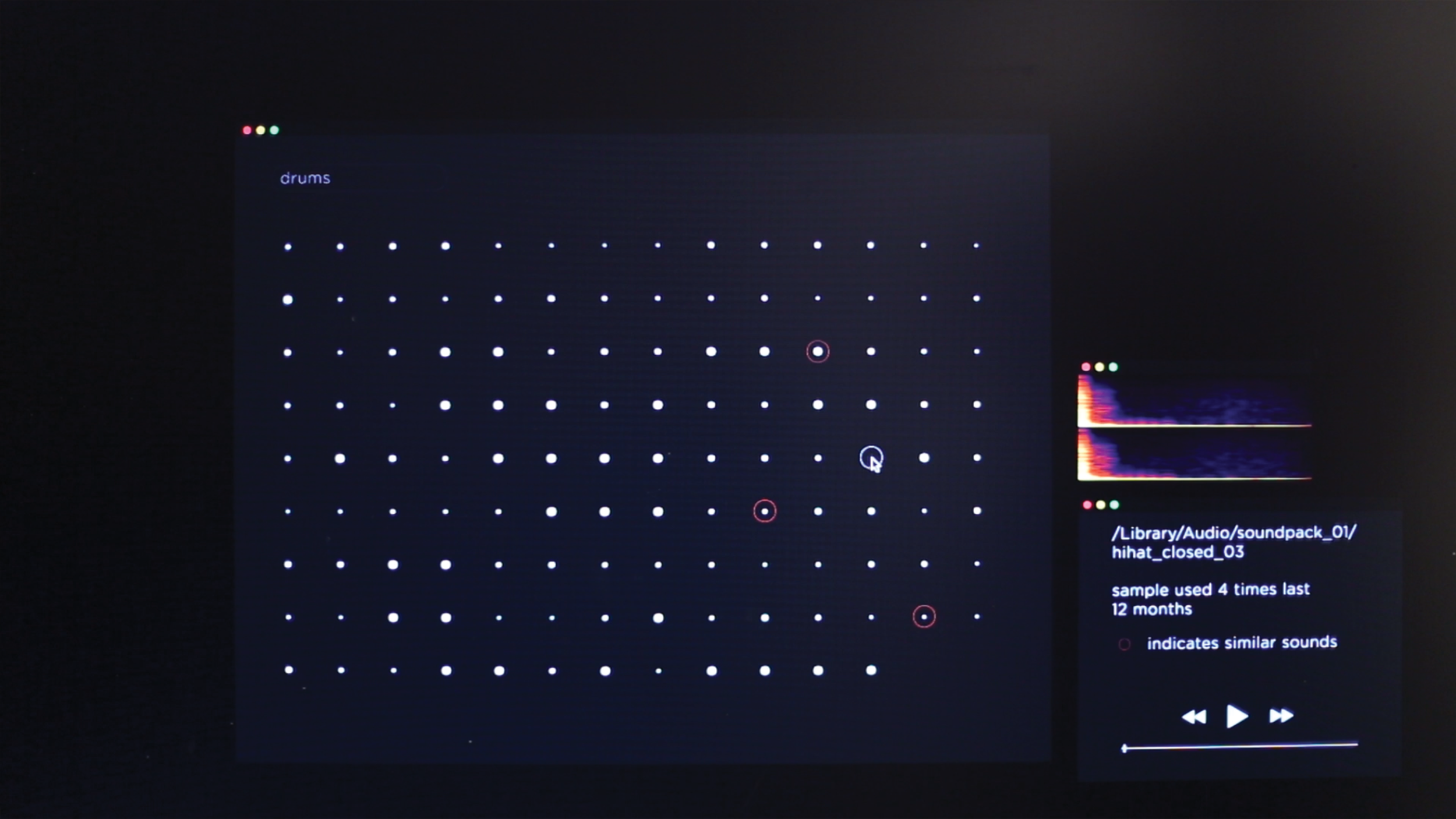Generating & Manipulating sound
Umeå Institute of Design - 2017
Music making and technological development has always been connected. The digital revolution has made advanced music production, writing, and distribution tools universally accessible. New intelligent tools built on machine learning are entering the market potentially changing how we create music and interact with creative content.
The project aimed to explored borderland between man and machine. To find alternatives to existing interaction models manifested in modern DAWs (Digital Audio Workstations). The outcome consists of three concept videos proposing changes to three moments in the workflow of songwriters and producers.
Method
To understand how songwriters and producers work the subject were investigated through contextual interviews. The different ways of working were mapped out and potential opportunity areas were identified. Experts within machine learning were consulted through interviews and literature.
Sketches, mock-ups and simple video prototypes were created and evaluated in multiple iterations with expert and novice music makers.
Result
The project outcome is three concepts focusing on three different moments in the workflow of songwriters and producers. It is taking these three moments, look at how to perform a specific task and change—not what you do—but how you do it. The concepts consist of three short videos. They are presented together with a similar look and feel but focuses on a specific task and concept. The concepts should propose alternatives to existing interaction models manifested in modern DAWs.
1. Create
Automating parts of the songwriting process and create a collaborative workflow between a you and a computer—through a conversational user interface.
2. Tune
A pressure sensitive touch-surface that let you manipulate sound. It is an adaptive system that automatically detects active controls in your DAW—it maps these active controls from your computer screen down to a touchpad
3.Find
Changes the way you organise and look for sound files. It is a automatised process where a software helps you compare different sounds to each other. It takes away most labels and focuses on mapping sound according to its auditory profile.







